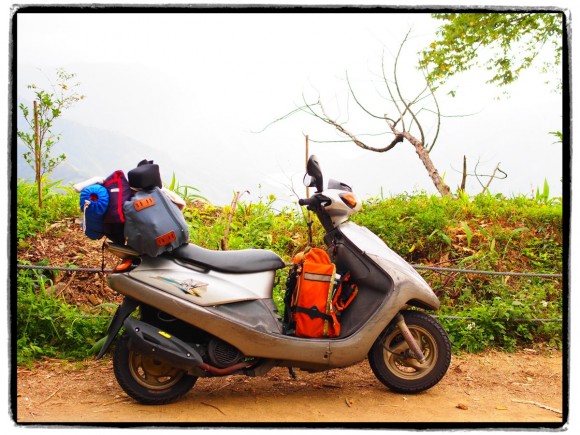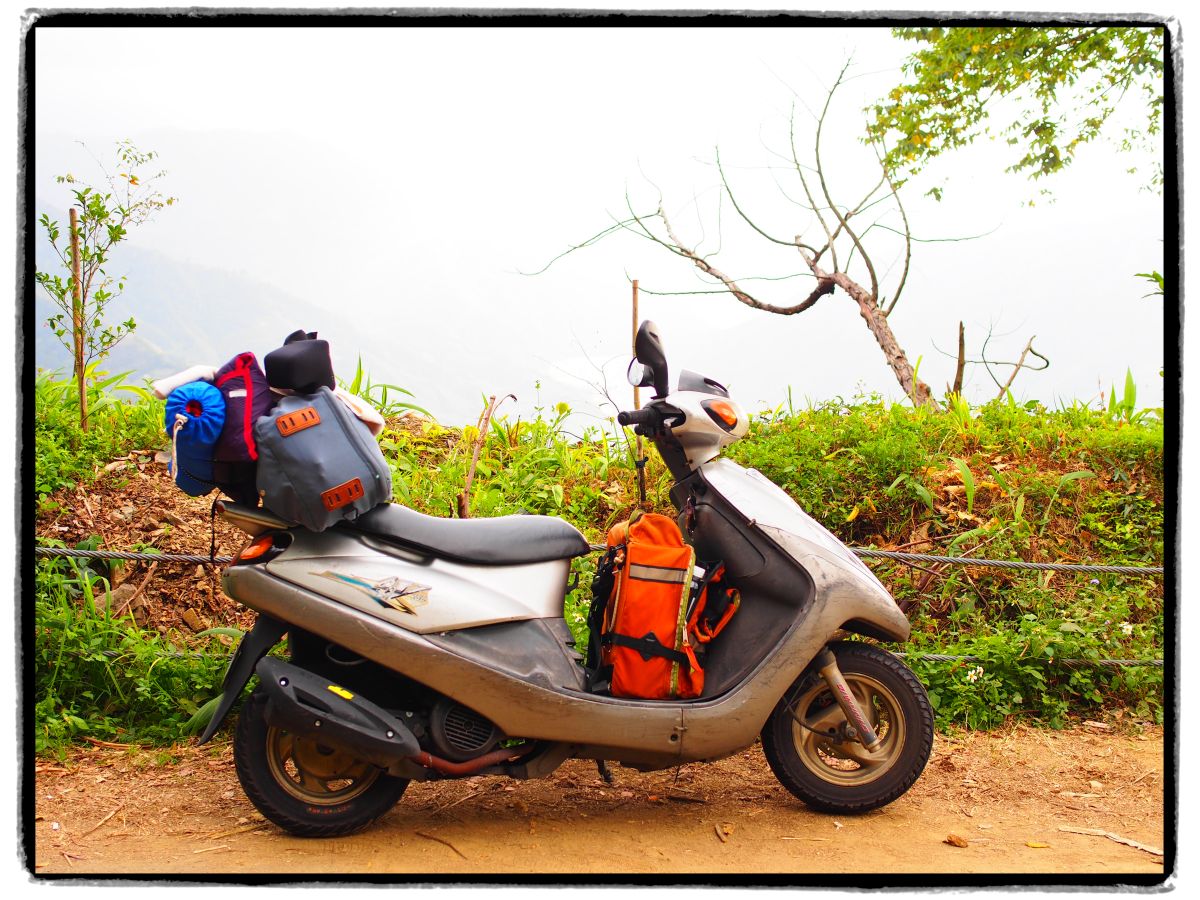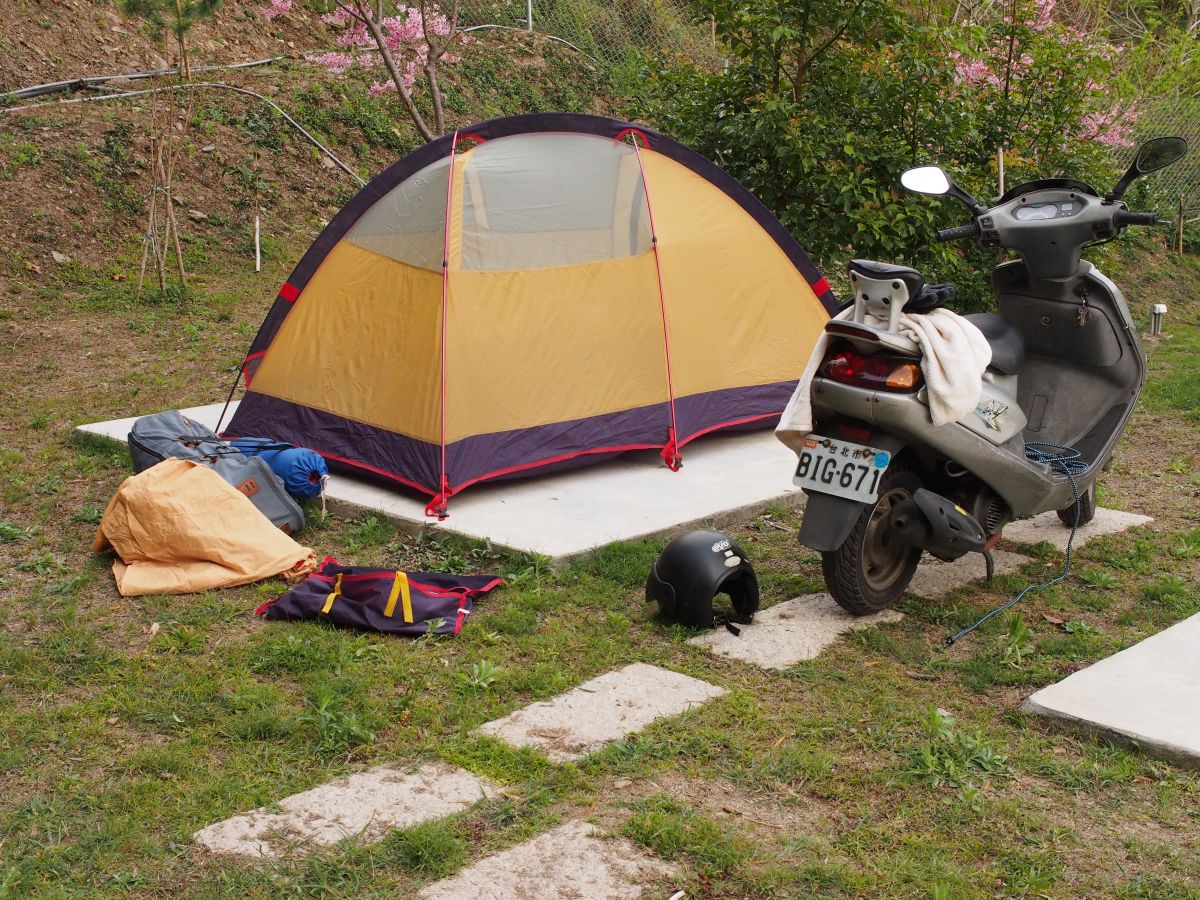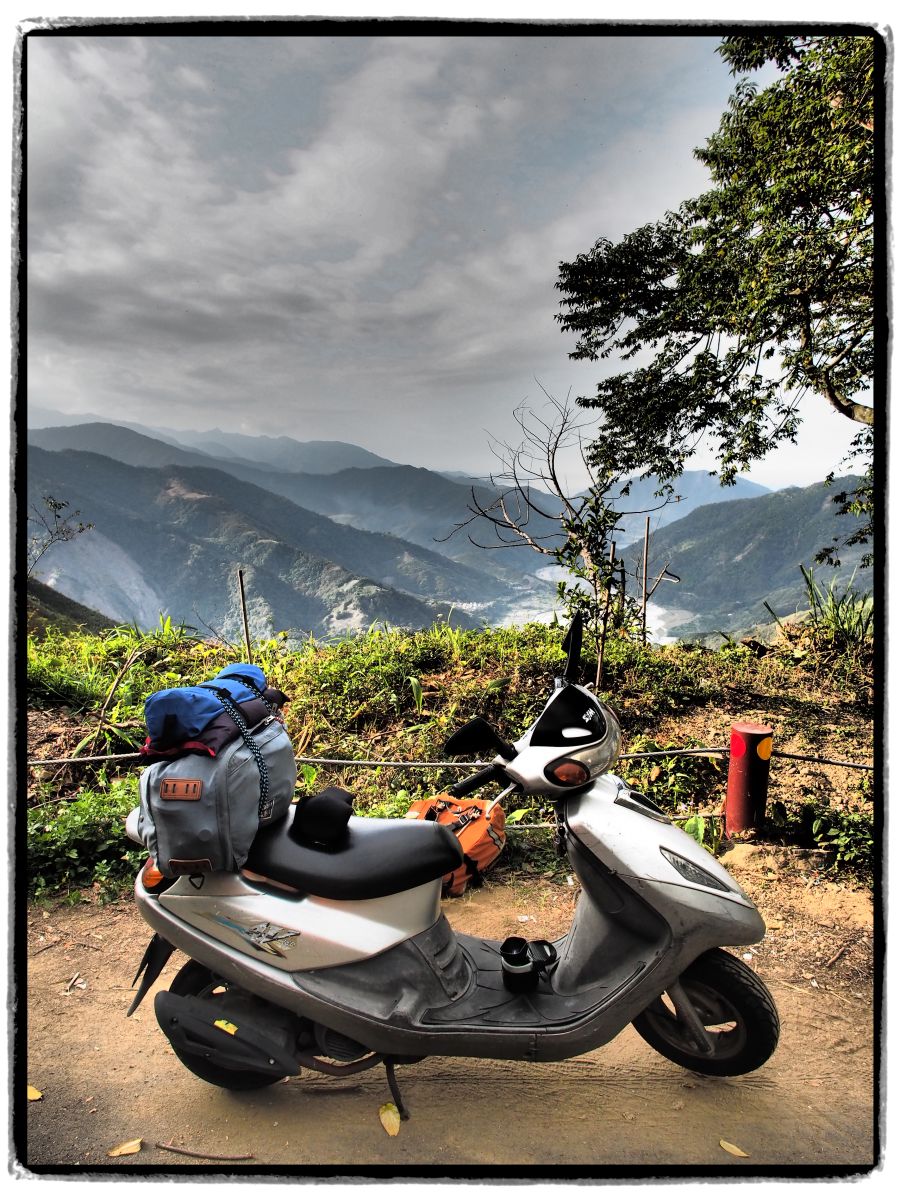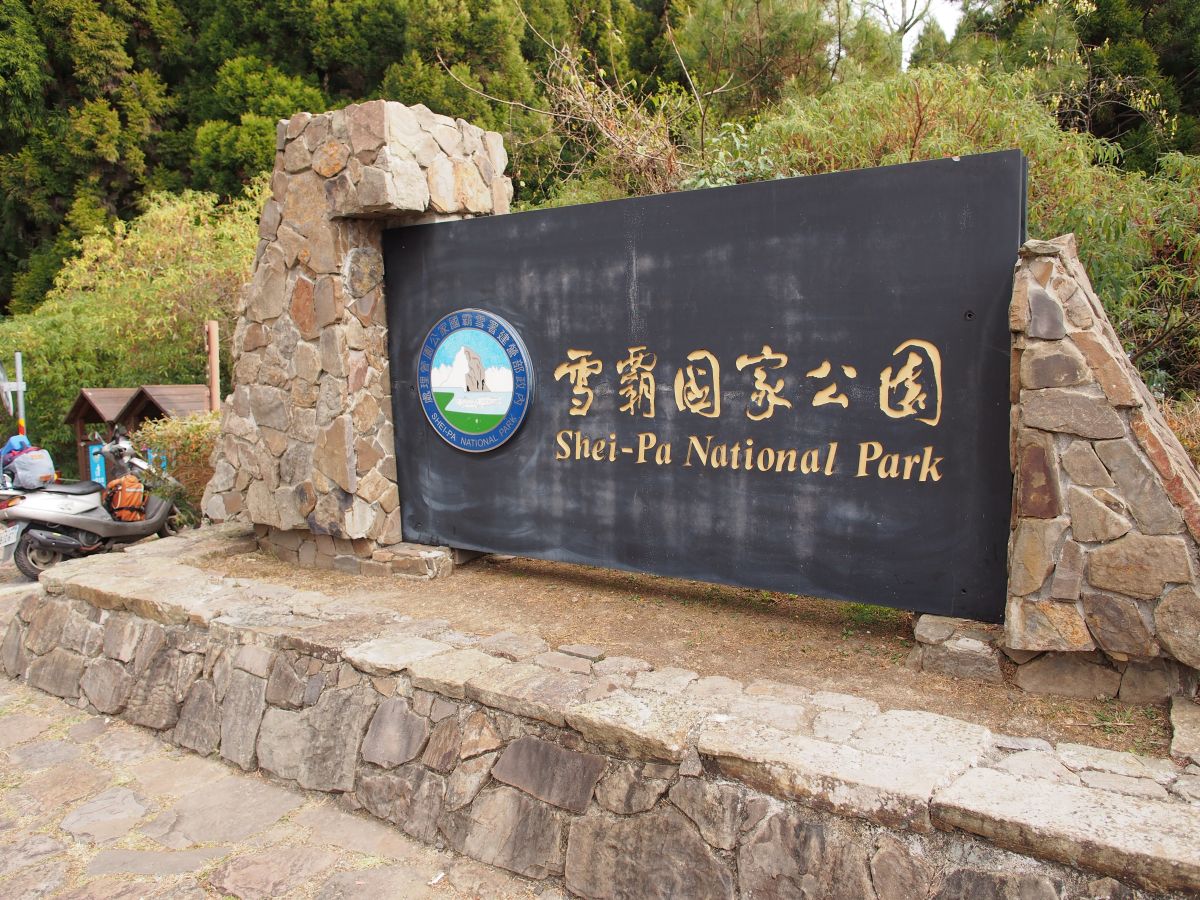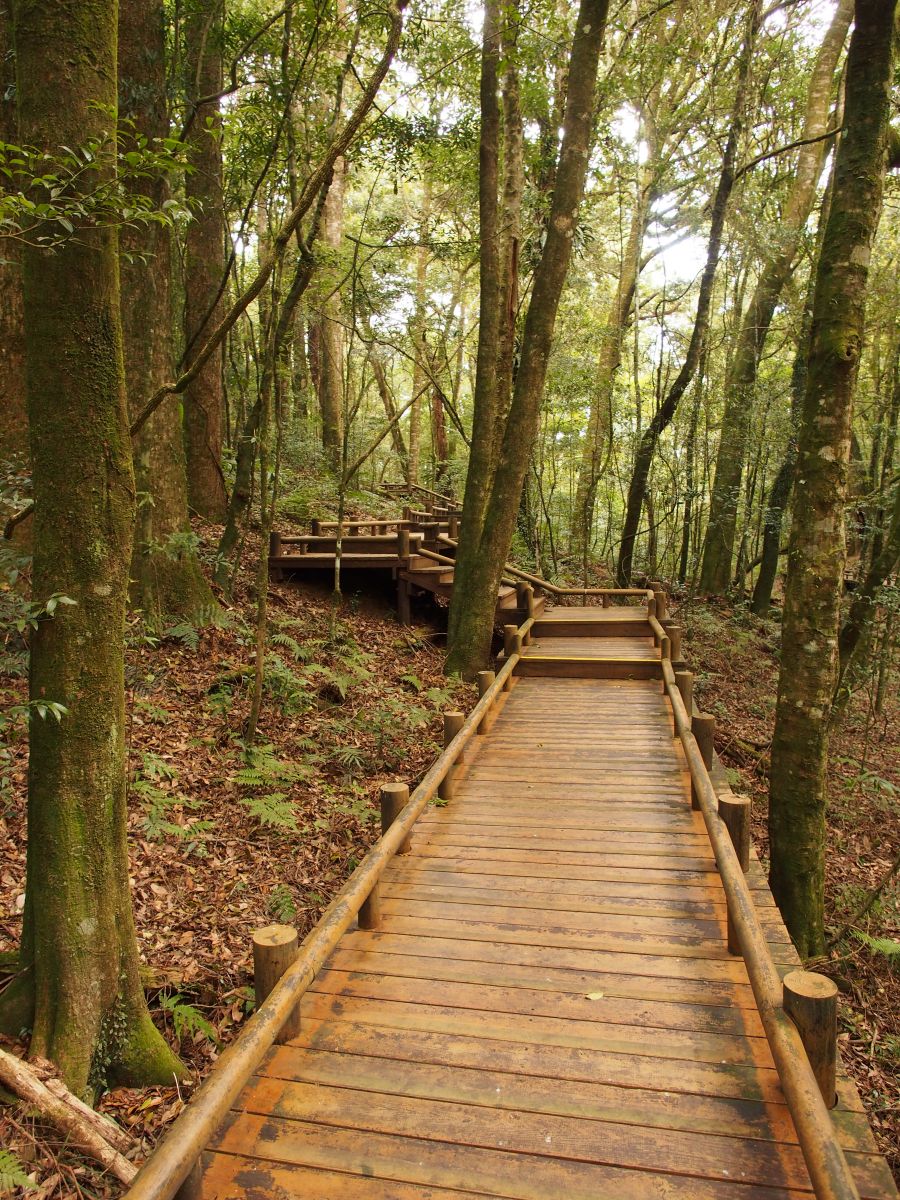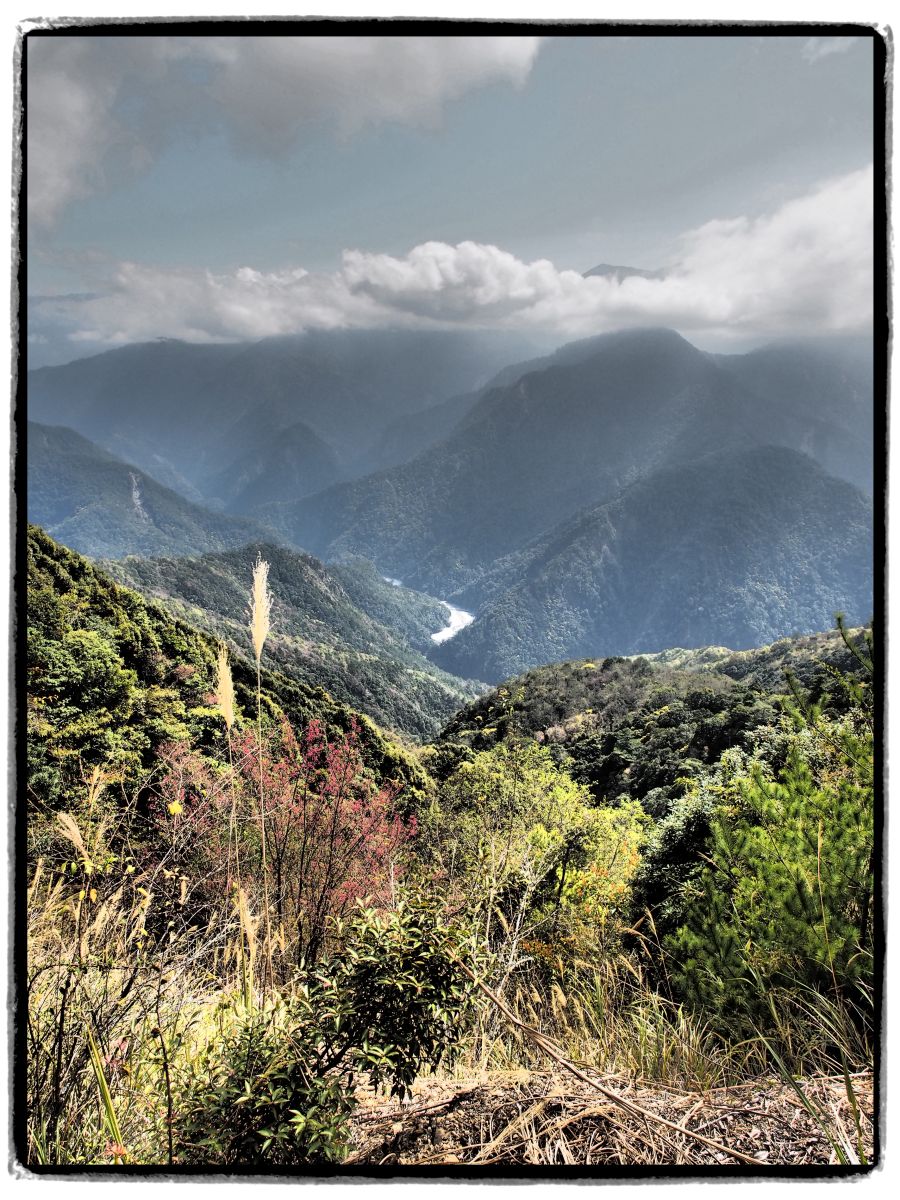Day 7 CNY Scooter Trip 2013
Day 7
Saturday February 16, 2013
9:18 a.m. Syuejian Scenic Area in Shei-Pa National Park
It almost goes without saying that I had another fabulous day on the road yesterday. I drove up to the town of Guguan first thing for a cup of coffee to start the day. Then I drove back down the central cross-island highway turning off onto side roads and crossing bridges here and there in order to do some exploring. These remote areas in Taiwan are usually populated by the various aboriginal tribes of the island. When the Han Chinese arrived in larger and larger numbers over time, the tribal people were pushed away from the flat coastal lands and up into the mountains. That’s a pattern you see in most countries in the world. The villages in these areas do seem different from other towns and villages in Taiwan but not by a huge amount. The people do not dress in traditional clothing anymore, of course, and much of their culture is on display in museums and cultural centers, but you don’t see it in day-to-day life. At least I don’t. Yet, there is a laidback quality to the towns – a relaxed tone – that you don’t see in the busy-busy nature of the other places in Taiwan. They also have their own languages, but they also speak Chinese.
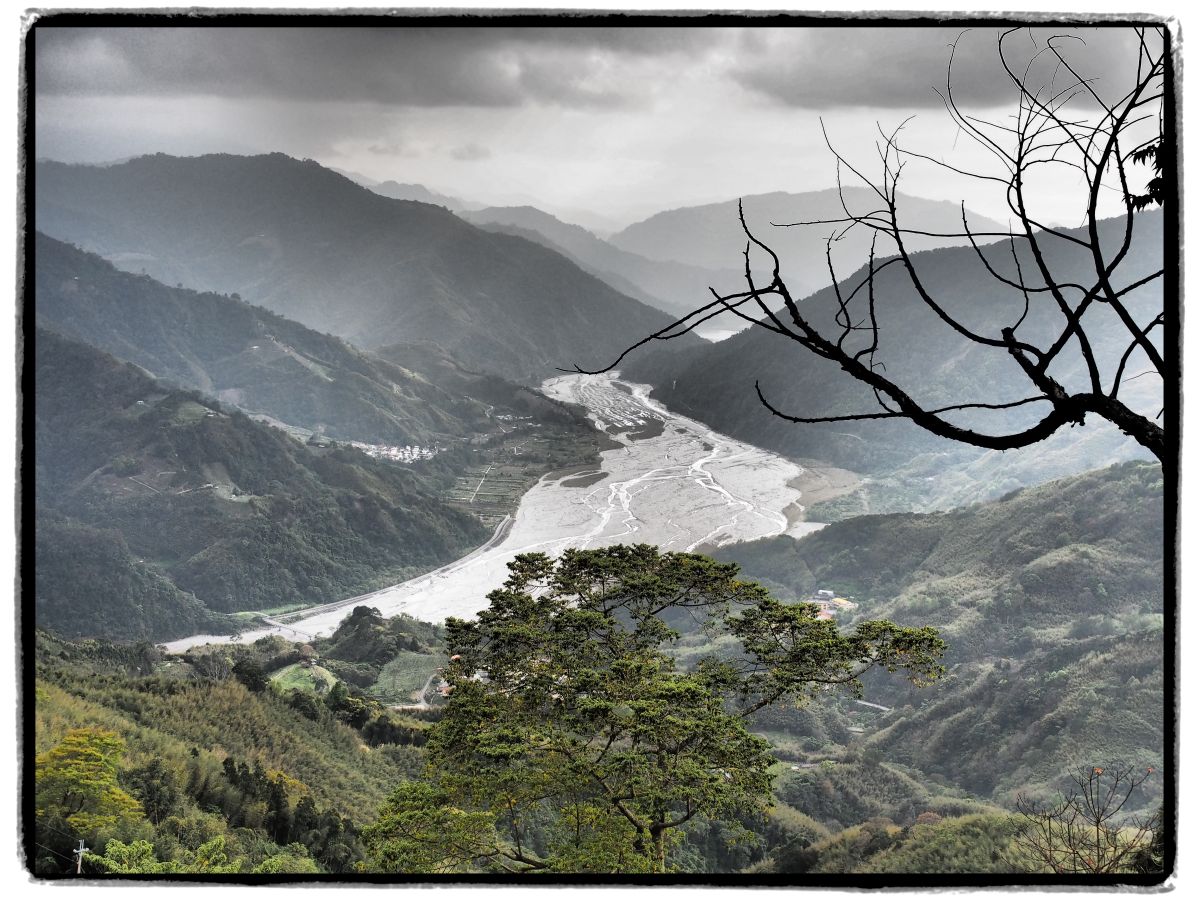
Daan River Valley
My plan was to drive along highway 8 to the town of Dongshih and then turn into the mountains along highway 47-1 to the Dongshih Forest Park. Dongshih turned out to be a fairly large city. It was much larger than I expected. I saw signs for the Forest Park and I followed them, but I must have missed an important one because I ended up driving right through the town and out the other side without seeing the right turn-off. There was no point turning back, so I kept going to see what there was to see. I was back on highway 3 after Dongshih – the highway that I taken out of Taipei a few days ago – I knew that there were many attractive areas along the way and I could turn off and go exploring at any point. Very soon, I came across signs for highways 55 and 58 and these headed into the region I wanted to explore. There was some confusion along the way and the roads kept disappearing and I found myself lost among farmer’s fields. I persevered, however, and somehow I ended up on a highway – quite a large and well-paved one – that wasn’t on any of my maps. I decided to follow it anyway. It seemed to be going in the right direction – west into the high mountains. Then, to my delight, I started to see signs indicated that this road led to the Syuejian Scenic Area, where I am now and exactly where I wanted to go. It may seem odd to get so excited about just finding the road that goes to your destination, but doing so is a big deal here. Roads and maps and signs are not quite as organized and consistent as they are in Canada. Add to that the Chinese language, and things can get a bit random and confusing. Navigating can take some effort.
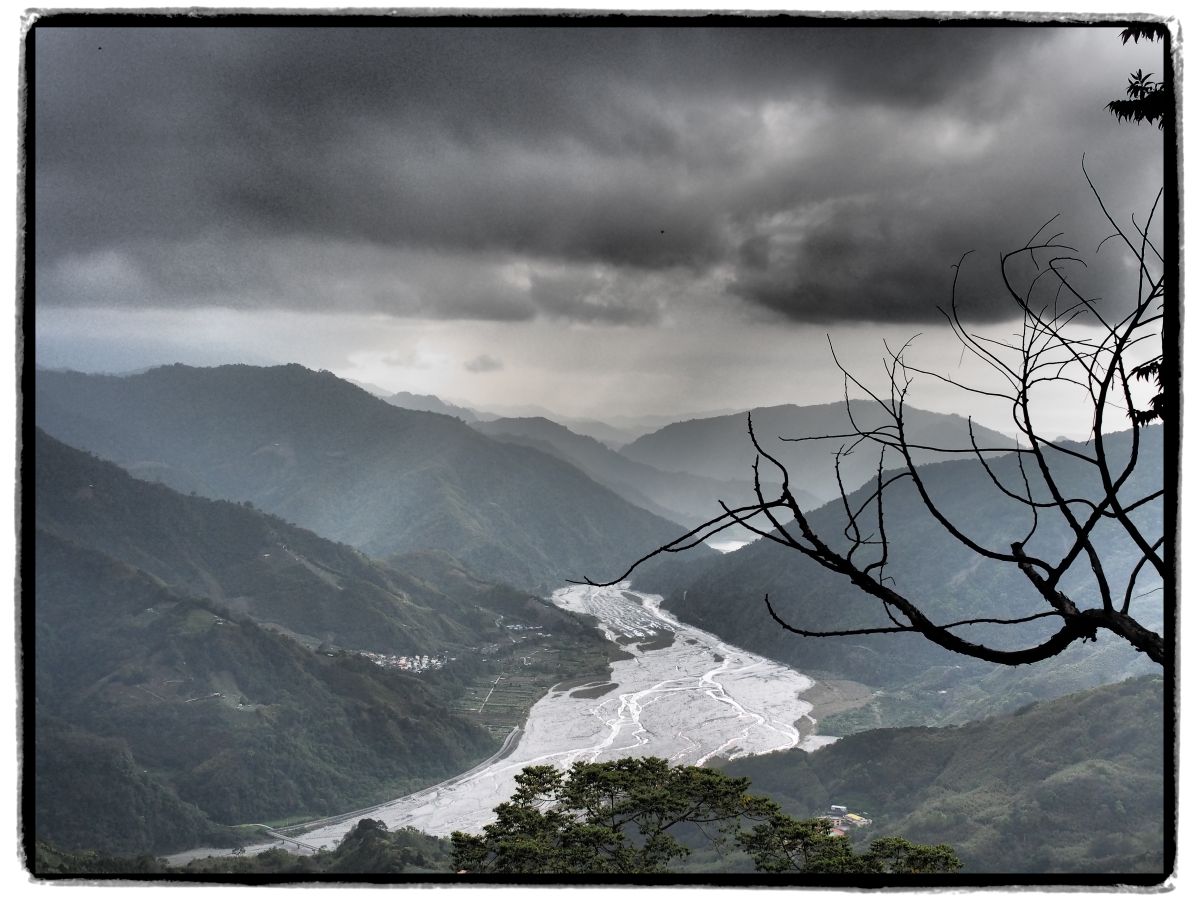
Daan River Valley
I knew nothing about this area. I just had a vague sense that it would be scenic and interesting. The area turned out to far exceed my expectations. It’s filled with river valleys, high mountains, lush forests, and aboriginal towns nestled into scenic spots. It was pure joy to drive down the roads here and explore. I stopped constantly to take pictures and check my various maps to see that I wasn’t ending up totally lost. The main road climbed almost steadily following a river valley. I kept my eyes open for places to stay, and I saw a few, but it was too early in the day to stop. I wanted to follow the road all the way to the end at this Scenic Area and then decide what to do from there. From some tourist maps I saw, there was a large Visitor Center at the very end of the road, and I thought perhaps there would be a place to stay there or I could camp.
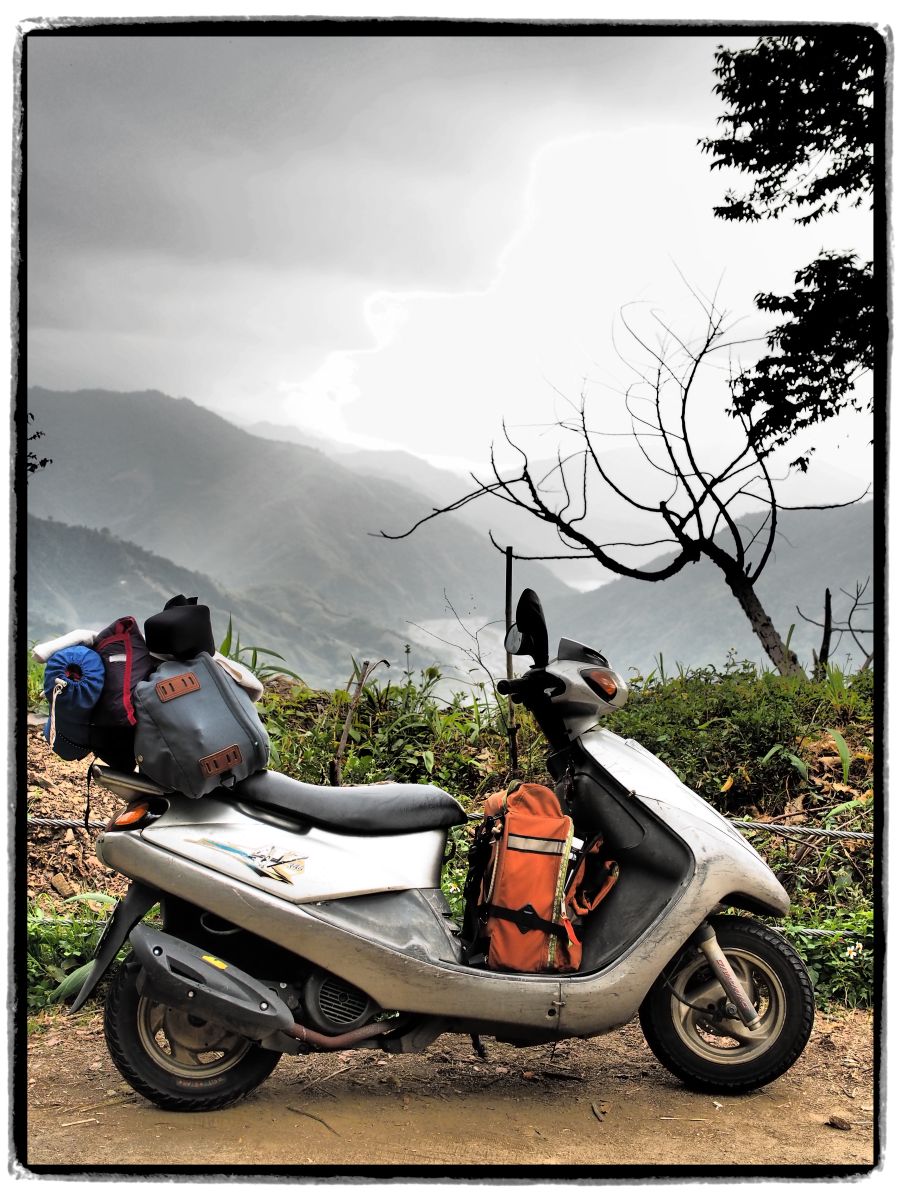
My Attila 150cc scooter loaded up with my backpack, tent, sleeping mat, and a rear pannier bag which I’m using as a backpack.
My road (I think I was on #47) came to a dead end at #61. From there, I could turn left to go back out of the mountains and down to the town of Dahu. Or I could turn right and head to the Scenic Area. There was a large roadside stall there, and I pulled over for a snack of some sausages and what they call tea eggs – boiled eggs soaking in tea water. Very few people speak English in these remoter areas, and I had some trouble communicating with the people there, but I eventually figured out that it was impossible to follow #61 to Dahu as I planned to eventually do. Another earthquake had caused a landslide that destroyed parts of the road. It was currently closed. I also learned that this family that ran the food stall also had a small campground. Campgrounds in Taiwan are not very beautiful or natural places. They tend to be more practical in nature – just open plots of land with a series of cement patios on them – each patio meant for one tent. And the patios are extremely close together. It seems almost silly to pay for the privilege of putting up your tent on a piece of cement beside lots of other pieces of cement. However, this campground did have a bathroom with running water. They could turn on the hot water for a hot water shower if you wanted – for an extra NT$50. If it were summer and the campground were full, it would be unpleasant. But there was no one else there. It’s too cold for anyone to camp, and I told these people that I might come back and camp there depending on what I find at the Scenic Area.
The road up to the Syuejian Scenic Area was very steep and offered all kinds of gorgeous lookout points over the river valleys and the mountains. The temperature plummeted as I climbed, and the vegetation changed until I was in high-altitude evergreen forests.
I was extremely happy to find that the Visitor Center was not just a shack in the woods. It was a large complex with lots of informational exhibits, a media room, full-time staff, and bathrooms plus even a lovely coffee shop. I’m insanely fond of coffee shops, and I headed straight for it to get a cup to warm up my body and my hands. I quickly formed the plan to camp down below at the food stall and then make my way back up here for 9 in the morning when the coffee shop opened. I was hoping there would be clear blue skies at that time in the morning.
After my coffee, I put on a couple more layers of clothing and my gloves and drove back down the mountain. The family at the food stall told me that it cost NT$600 to camp there. That’s a bit pricey, but I think the idea is that it’s NT$600 for the whole cement patio, not per person. You could have as many people there as you want, so it would be cheap for a group of five or six. For a single person like me, it’s not a great deal. Still, I had been hoping to use my tent on this trip and give it a test run, and this was my chance.
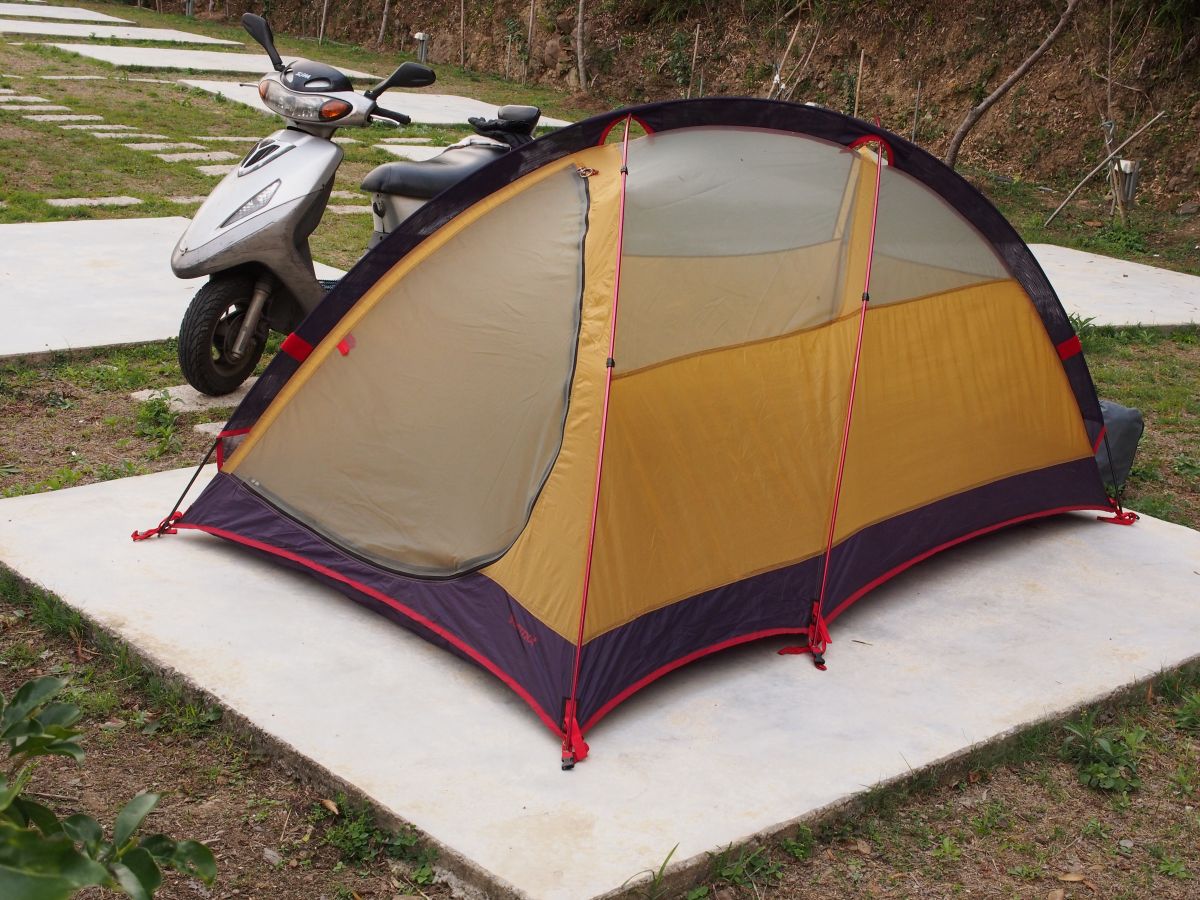
Typical campground in Taiwan. Each cement pad is meant for a tent. I paid NT$600 to pitch my tent for the night here. The campground had a bathroom with showers. A hot water shower cost NT$50 extra.
I paid the family and they brought me over to the campground and showed me the bathroom and other facilities. Then they left me to set up my tent. I bought this tent many years ago before my trip to Ethiopia and I love it to death. It went up quickly and I went through the familiar motions of laying out my sleeping pad and my sleeping bag and other gear. It’s been a long time since I’ve done any camping, but the routine is very familiar and I did it on autopilot. Once I had made camp, I walked over to the food stall to see about getting some dinner. I got a delicious plate of noodles with cabbage and a type of pork sauce and a big bowl of chicken soup with large hunks of chicken. It was a big meal and I needed it not having eaten too much during the day.
The sun had gone down by the time I’d finished my dinner and I retired to my tent in the dark. I’m still reading the book “The Help” and I passed a pleasant hour or two reading and looking at my maps. My tent is technically larger than is necessary for one person. I could get away with a much smaller and lighter tent. However, I like having a lot of space to spread out in. This tent also has vertical walls and lots of headroom – a rare quality in a tent. So I can spend a lot of time in the tent and not feel cramped or uncomfortable.
Eventually there was nothing left to do but turn off my headlamp and try to go to sleep. It was early, but I was already very tired and was more than happy to get a good night’s rest. The night passed slowly as I drifted in and out of sleep. One problem is that I’ve come down with a brutal cold on this trip and I had to blow my nose constantly. My runny nose and sore throat made it difficult to sleep. I get a lot of colds in Taiwan for some reason, and they are brutal colds. I don’t know why that is.
A big feature of camping is the noise of the night. Inside a house and apartment, you don’t hear the things that you hear when outside. There was zero traffic noise since this area is so remote and I could hear every rustle of the leaves in the wind and every other sound of nature. At one point, the local dogs began howling at the moon, and it was great fun to lie there in the dark and listen to them yelping and keening. I had no idea I was surrounded by quite so many dogs until they started to give voice. One constant sound was the passage of jets overhead. It’s only when you are camping outside that you realize just how busy the skies are with jets passing all night long. I remember when I was in Africa, I would lie in my tent and think about those metal tubes flying through the sky with all the people inside wrapped in luxury and comfort and food and drinks of all kinds. I felt very removed from that world in Africa, and it struck me how close we were – separated by just a few thousand feet of space – but so far. I don’t have that strong a reaction here in Taiwan, because I pass my days surrounded by good food and delicious snacks and drinks. Taiwan is a developed country after all. Still, it’s odd to lie there in your tent and hear jet after jet passing by overhead and think of all those people up there in those luxurious tubes.
Morning finally came, and I quickly broke camp. I didn’t bother trying to shower or shave. Just a quick brush of the teeth and a wipe of the face would have to do. There had been clear skies during the night and there had been some rain, so I wasn’t sure what the day would bring. I was excited to see that the skies were blue and clear. That boded well for the day, and I loaded up my scooter and began the drive back up to the Visitor Center. Unfortunately, in the brief time it had taken me to break camp and get on the road, the skies already became a bit hazy. I find the skies are rarely clear and crisp in Taiwan. One rarely gets good views of the distant landscapes. Still, I stopped here and there along my drive and took some pictures. I used some filters on my camera to give the clouds a dramatic tone and that should compensate for the haze.
Everyone at the Visitor Center remembered me from the day before and I was greeted like an old friend. For a foreigner to show up here alone is quite an event. That fact – that I’m traveling alone – never ceases to amaze people in Taiwan. It is the one thing that they focus on and can’t seem to quite get their heads around. They find it either very impressive or so bizarre as to be impossible to understand. I wonder sometimes if the western habit of reading has something to do with this. Foreigners here are noted for their habit of reading. Taiwanese in general don’t read books. If you see a foreigner on the subway system or in a bus, they almost always have their nose in a book. I never see Taiwanese reading. I never feel lonely while traveling anyway. I meet lots of people precisely because I am alone. But I also don’t feel lonely and time never hangs heavy on my hands because I always have a book to read. The thought of retiring to my tent at night is a great pleasure because I know I will open up a book and read. For a Taiwanese person to be by themselves in a tent must be a lonely prospect indeed. What can they do inside the tent except lie there and eventually sleep?
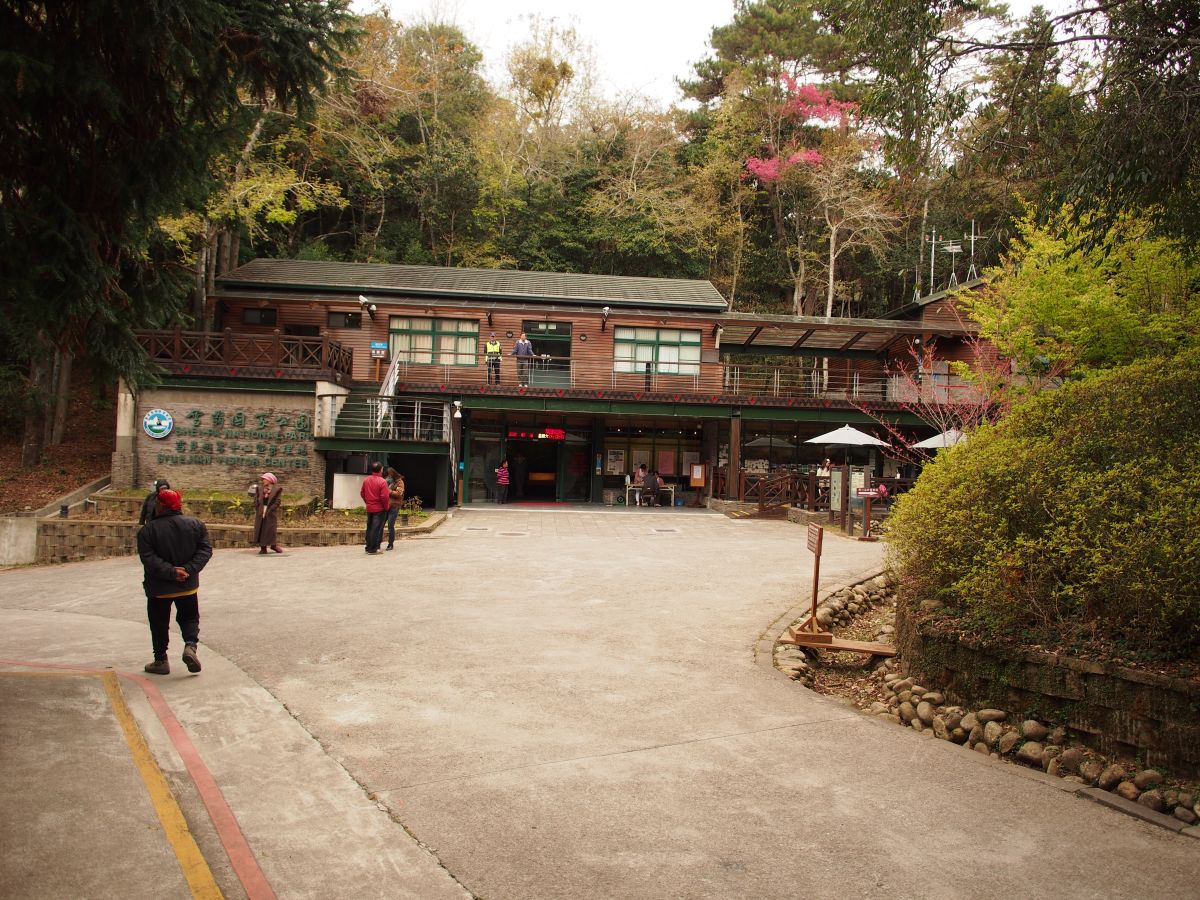
Visitor Center at the Syuejian Scenic Area. There is lots of information available here, plus bathrooms, a nice coffee shop, and a media room with movies playing all day.
Well, here I am at the Visitor Center and enjoying my morning cup of coffee with a thick slice of toast with chocolate spread. Not exactly a traditional Taiwanese breakfast, but it is what they have on the menu. Normally, one would come to a place like this in order to set off on a long hike. Shei-Pa National Park is a huge park covering a vast chunk of the remote mountainous interior of Taiwan. There are lots of opportunities for hiking and mountain climbing and wilderness camping. I’m not here to do that, though. I will likely take a stroll down a short trail near the Visitor Center, watch a movie in their media center, and otherwise hang out. In a short while, I’ll be back on my scooter and driving back out of the mountains. I have two days to make my way back to Taipei, and I’ll spend today getting halfway there, I suppose. It would be possible to cover the entire distance in one day, but it would be a long and hard drive on a scooter. Better to go slowly.
Tags: Attila scooter, CNY Scooter Trip Taiwan 2013, Dahu, Dongshih, Guguan, Marmot, Marmot Peapod Tent, NT, scooter, Shei-Pa, Syuejian, Syuejian Scenic Area, Taiwan, tent, Visitor Center

